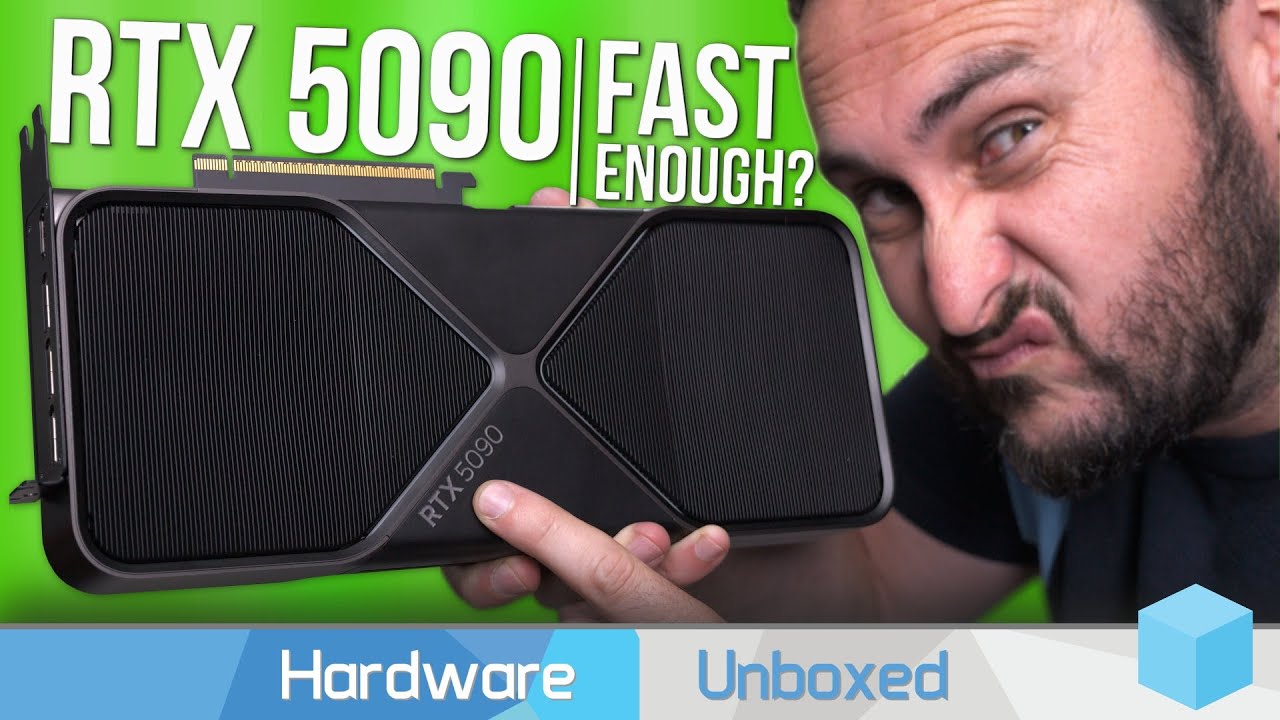The Nvidia GeForce RTX 5090, priced at $2,000, offers only a modest 27% performance increase over the RTX 4090 at 4K resolution, which is disappointing given the significant price hike and similar manufacturing process. Despite solid thermal management, the card’s incremental gains and underwhelming ray tracing performance raise concerns about its value and competitiveness in the market.
In the video review of the Nvidia GeForce RTX 5090, the host discusses the expectations surrounding Nvidia’s latest flagship GPU, which has been released over two years after the RTX 4090. Priced at $2,000, the RTX 5090 features advancements like PCI Express 5.0 and GDDR7 memory, but it continues to utilize the same TSMC 4N process as its predecessor. This lack of a new manufacturing node raises questions about the performance improvements Nvidia can deliver. The host highlights that while the RTX 5090 is larger and has more cores, it must justify its price through performance gains that are somewhat underwhelming compared to its cost.
The video showcases benchmark results across various games at both 1440p and 4K resolutions. In many instances, the RTX 5090 shows around a 27% performance increase over the RTX 4090 at 4K, which is disappointing given the 25% price increase. The performance uplift varies by game, with some titles showing a marginal improvement and others revealing potential CPU bottlenecks that hinder the GPU’s capabilities. For example, games like “Marvel’s Rivals” and “God of War Ragnarok” demonstrate solid gains, but others like “Counter Strike 2” and “Starfield” show minimal differences, indicating that the architecture might struggle with certain resolutions or workloads.
Thermal performance is another focus of the review, with the RTX 5090 exhibiting higher temperatures and power consumption than the RTX 4090 during testing. The card peaked at a temperature of 73°C and averaged a power draw of 492 watts during intensive gaming sessions. Despite these concerns, the host commends Nvidia’s cooling solution, which manages to keep noise levels low even under load. However, the increased power consumption, particularly in certain titles, raises questions about efficiency compared to the previous generation.
The review also touches on the RTX 5090’s ray tracing performance, which appears to be less impressive than expected. The host emphasizes that while Nvidia promotes features like DLSS 4 and frame generation, these technologies do not necessarily translate to meaningful performance improvements in real-world gaming scenarios. Instead, they may introduce latency issues that defeat the purpose of seeking higher frame rates, particularly in competitive gaming environments. The host criticizes Nvidia’s marketing tactics that suggest these features significantly enhance performance.
In conclusion, the RTX 5090 is characterized as a powerful but ultimately disappointing product due to its incremental performance gains relative to its predecessor and the significant price increase. The host suggests that it resembles more of an upgraded RTX 4090 than a true next-generation GPU, which could lead to consumer dissatisfaction. While the card performs well in high-resolution gaming and can provide a solid experience for those willing to invest, the lack of substantial value and performance advancements raises concerns about its competitiveness in the market. The video ends with an invitation for viewers to share their thoughts and highlights upcoming content related to the RTX 5090 and the GeForce 50 series.
